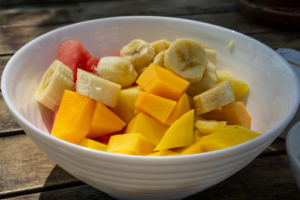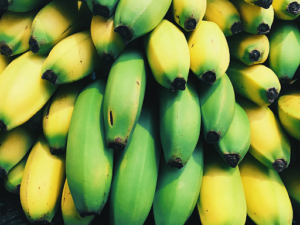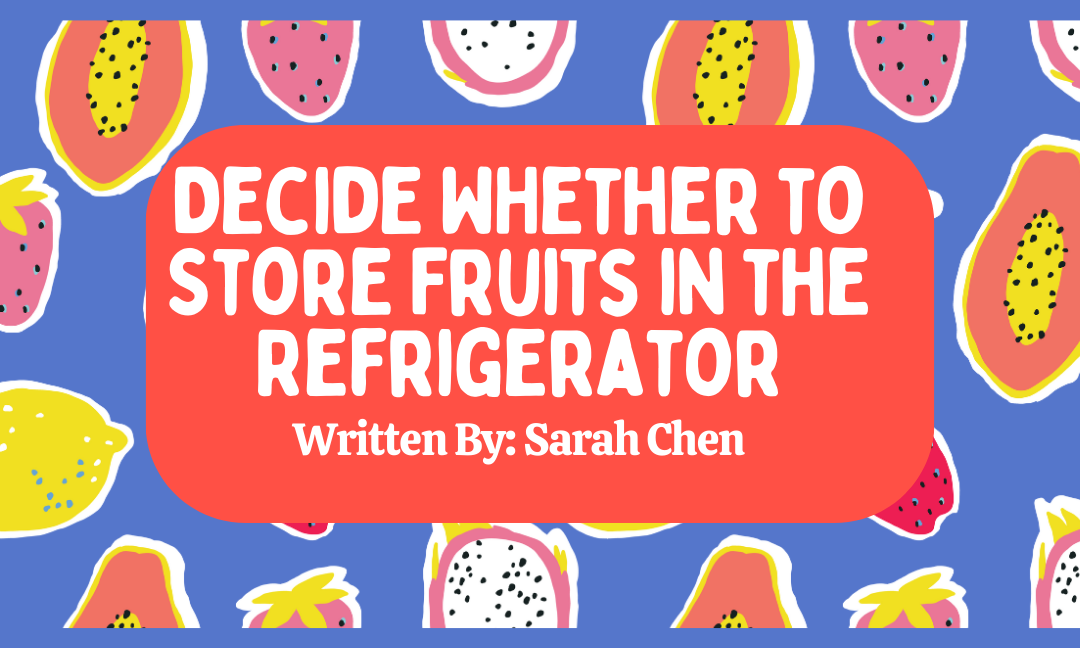Written by: Sarah Chen
Editted by: Koneenika Datta
Designed by: Jiya Mehta
Published by: Maryam Khan
The temperature of the refrigerator is usually lower than room temperature and is used to keep food fresh. Whether to put fruits in the refrigerator is just a casual thing to do, but it’s an important decision. Some fruits should be stored in the refrigerator, while others do better at room temperature. Starting from the purpose of eating them when they’re both ripe and fresh, let’s take a closer look at some examples.
 Let’s consider berries first. Strawberries, raspberries, and blueberries should all be stored in the refrigerator. Unless you plan to eat or use the berries within a day of purchase. They are delicate and will spoil quickly if left out at room temperature. On the other hand, blackberries can be stored at room temperature for a day or two before going bad. It’s better not to wash berries before placing them in the refrigerator because too much water on the surface will accelerate their decay.
Let’s consider berries first. Strawberries, raspberries, and blueberries should all be stored in the refrigerator. Unless you plan to eat or use the berries within a day of purchase. They are delicate and will spoil quickly if left out at room temperature. On the other hand, blackberries can be stored at room temperature for a day or two before going bad. It’s better not to wash berries before placing them in the refrigerator because too much water on the surface will accelerate their decay.
 Contrary to berries, if you don’t particularly want to eat cold fruits and plan to eat them and plan to eat them within a day of putting them in the refrigerator, I personally do not recommend bananas, pineapples, durians, oranges and other tropical fruits be refrigerate, because these are tropical fruits. Tropical fruits grow in a warm tropical environment, so when they are stored in a cold refrigerator that is opposite to the growing environment, they will suffer damage from the cold. Especially the tropical fruits that are not yet fully mature, their flavour will not be as good as in the warmer room temperature.
Contrary to berries, if you don’t particularly want to eat cold fruits and plan to eat them and plan to eat them within a day of putting them in the refrigerator, I personally do not recommend bananas, pineapples, durians, oranges and other tropical fruits be refrigerate, because these are tropical fruits. Tropical fruits grow in a warm tropical environment, so when they are stored in a cold refrigerator that is opposite to the growing environment, they will suffer damage from the cold. Especially the tropical fruits that are not yet fully mature, their flavour will not be as good as in the warmer room temperature.
 Furthermore, deciding whether to store different fruits in the refrigerator also depends on the ripeness of the fruits. Unripe fruits ripen at room temperature, while ripe fruits spoil more quickly at room temperature. For example, if you buy a mango with green skin, it means it is not ripe. If you don’t want to eat an unripe mango, you must not put it in the refrigerator, but keep it at room temperature and wait for its skin colour to turn yellow, orange or red. Take kiwi fruit as another example. Pinch the kiwi fruit gently with your hands. If the softness is very low, it means it is not ripe and you need to put it at room temperature and pinch it (remember to be gentle) every day to see if it is softer.
Furthermore, deciding whether to store different fruits in the refrigerator also depends on the ripeness of the fruits. Unripe fruits ripen at room temperature, while ripe fruits spoil more quickly at room temperature. For example, if you buy a mango with green skin, it means it is not ripe. If you don’t want to eat an unripe mango, you must not put it in the refrigerator, but keep it at room temperature and wait for its skin colour to turn yellow, orange or red. Take kiwi fruit as another example. Pinch the kiwi fruit gently with your hands. If the softness is very low, it means it is not ripe and you need to put it at room temperature and pinch it (remember to be gentle) every day to see if it is softer.
 In addition, let me introduce climacteric fruits. Mangos, kiwi fruits and many other fruits such as peaches, bananas, avocados, apples, and pears are climacteric fruits. This means they can still ripen after picking, and non-climacteric fruits including strawberries, grapes, cherries and many others cannot. Therefore, when picking non-climacteric fruits, people need to pay attention to the timing of their ripeness, and some of the climacteric fruits may not be ripe yet when you buy them, which means you have to decide to store them in the refrigerator or a room temperature by check their ripeness.
In addition, let me introduce climacteric fruits. Mangos, kiwi fruits and many other fruits such as peaches, bananas, avocados, apples, and pears are climacteric fruits. This means they can still ripen after picking, and non-climacteric fruits including strawberries, grapes, cherries and many others cannot. Therefore, when picking non-climacteric fruits, people need to pay attention to the timing of their ripeness, and some of the climacteric fruits may not be ripe yet when you buy them, which means you have to decide to store them in the refrigerator or a room temperature by check their ripeness.
 Finally, season is also a very important factor. In the summer, it’s especially important to pay attention to storage needs. Many fruits will spoil quickly in the heat. For example, tomatoes should be stored at room temperature, but in the summer, they can quickly become overripe and mushy. It’s best to store them in a cool, dark place outside of the refrigerator. In the winter, some fruits can be stored outside of the refrigerator. For example, apples and pears can be stored in a cool, dark place for several weeks since they are hard and easy to store. However, delicate items like berries still need to be refrigerated.
Finally, season is also a very important factor. In the summer, it’s especially important to pay attention to storage needs. Many fruits will spoil quickly in the heat. For example, tomatoes should be stored at room temperature, but in the summer, they can quickly become overripe and mushy. It’s best to store them in a cool, dark place outside of the refrigerator. In the winter, some fruits can be stored outside of the refrigerator. For example, apples and pears can be stored in a cool, dark place for several weeks since they are hard and easy to store. However, delicate items like berries still need to be refrigerated.
Overall, it’s important to pay attention to the specific needs of each fruit when it comes to storage. By storing them correctly, you can ensure that they stay fresh and delicious for as long as possible. The starting point for this blog about storing fruit is to eat the fruit when it is ripe and fresh, it does not include any content on how to store fresh fruits for a longer period of time or other purpose. I hope it is helpful and thank you very much for reading it!
References
https://www.bioconservacion.com/blog/climateric-and-non-climateric-fruit-at-postharvest-care
https://www.tastingtable.com/1160284/the-reason-you-should-never-refrigerate-underripe-fruit/
https://www.marthastewart.com/1539188/washing-storing-berries-guide

